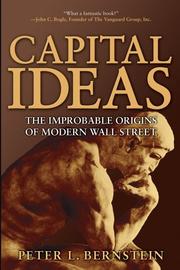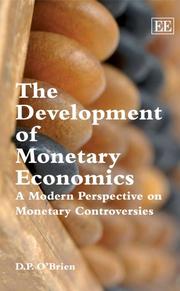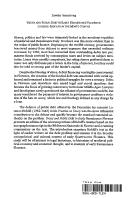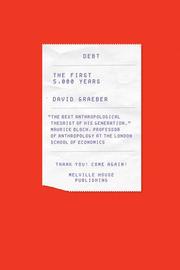
ISSN: 01807641 ISBN: 2801107689 9782801107683 Year: 1988 Volume: vol *116 Publisher: Gembloux: Duculot,
Abstract | Keywords | Export | Availability | Bookmark
 Loading...
Loading...Choose an application
- Reference Manager
- EndNote
- RefWorks (Direct export to RefWorks)
Money market. Capital market --- History --- Finances publiques --- Geschiedenis --- Histoire --- Openbare financiën --- Capitalistes et financiers --- Finances --- Biographies --- Capitalists and financiers --- -Capitalists and financiers --- -336.7-057 --- histoire economique --- AA / International- internationaal --- 08 --- Financiers --- Investors --- Businesspeople --- Biography --- economische geschiedenis --- Biografieën en memoires. --- 336.7-057 --- Biografieën en memoires --- 336.7 <09> --- 336.7 <09> Geschiedenis van het bankwezen --- Geschiedenis van het bankwezen --- 940 --- financiers --- economische en sociale geschiedenis --- histoire économique et sociale --- Capitalists and financiers - France - Biography --- Capitalists and financiers - France - History
Book
ISBN: 9065508082 Year: 2004 Volume: 57 Publisher: Hilversum Verloren
Abstract | Keywords | Export | Availability | Bookmark
 Loading...
Loading...Choose an application
- Reference Manager
- EndNote
- RefWorks (Direct export to RefWorks)
History of the Netherlands --- anno 1500-1599 --- Deventer --- Nijmegen --- 336.7 <09> --- 949.274 DEVENTER --- 949.282 NIJMEGEN --- Geschiedenis van het bankwezen --- Geschiedenis van Nederland: provincie Overijssel:--reg./lok.--DEVENTER --- Geschiedenis van Nederland: provincie Gelderland:--reg./lok.--NIJMEGEN --- 949.282 NIJMEGEN Geschiedenis van Nederland: provincie Gelderland:--reg./lok.--NIJMEGEN --- 949.274 DEVENTER Geschiedenis van Nederland: provincie Overijssel:--reg./lok.--DEVENTER --- 336.7 <09> Geschiedenis van het bankwezen --- Nijmegen [Gelderland]

ISBN: 9780471731740 0471731749 Year: 2005 Publisher: Hoboken: Wiley,
Abstract | Keywords | Export | Availability | Bookmark
 Loading...
Loading...Choose an application
- Reference Manager
- EndNote
- RefWorks (Direct export to RefWorks)
Finance --- Wall Street --- 336.7 <09> --- 336.76 --- 336.7 --- 336.7 Geldwezen. Kredietwezen. Bankwezen. Financien. Monetaire econonomie. Beurswezen --- Geldwezen. Kredietwezen. Bankwezen. Financien. Monetaire econonomie. Beurswezen --- 336.76 Beurswezen. Geldmarkt. Valutamarkt. Binnenlandse geldmarkt. Valutamarkt --- Beurswezen. Geldmarkt. Valutamarkt. Binnenlandse geldmarkt. Valutamarkt --- 336.7 <09> Geschiedenis van het bankwezen --- Geschiedenis van het bankwezen --- Funding --- Funds --- Economics --- Currency question --- Wall Street (New York, N.Y.) --- Financial District (New York, N.Y.)
Book
ISBN: 9789464550177 9464550171 Year: 2022 Publisher: Verloren Hilversum
Abstract | Keywords | Export | Availability | Bookmark
 Loading...
Loading...Choose an application
- Reference Manager
- EndNote
- RefWorks (Direct export to RefWorks)
De inkomstenbronnen van de middeleeuwse vorsten waren veelal niet toereikend voor hun behoeften. Daarom gaven ze vaak hun domeinen in onderpand voor leningen en stonden ze ook de inkomsten uit de domeinen af als vergoeding voor de leningen. Daarmee namen hun structurele inkomsten af en kwamen ze aan de grond te zitten. --
336.7 <09> --- 949.19.01 --- 949.19.01 Geschiedenis van de Nederlanden:--Middeleeuwen (5de-15de eeuw) --- Geschiedenis van de Nederlanden:--Middeleeuwen (5de-15de eeuw) --- 336.7 <09> Geschiedenis van het bankwezen --- Geschiedenis van het bankwezen --- History of the Low Countries --- overheidsfinanciën --- middeleeuwen --- Brabant, hertogdom --- anno 1300-1399 --- anno 1400-1499 --- Luxembourg --- Gelderland (Prov.) --- North Holland (Prov.) --- Zuid-Holland (Prov.) --- Finance, Public --- Finance, Public. --- Fiscal policy --- Fiscal policy. --- History --- Netherlands. --- Gelderland [province] --- North Holland [province] --- South Holland [province]

ISBN: 9781847202604 1847202608 Year: 2007 Publisher: Cheltenham, UK: Elgar,
Abstract | Keywords | Export | Availability | Bookmark
 Loading...
Loading...Choose an application
- Reference Manager
- EndNote
- RefWorks (Direct export to RefWorks)
Economic schools --- Monetary policy --- History --- 336.74 --- 336.7 <09> --- AA / International- internationaal --- 333.403 --- -332.4 --- Monetary management --- Economic policy --- Currency boards --- Money supply --- Geld. Geldwezen. Monetaire sector. --- Geschiedenis van het bankwezen --- Monetaire theorieën. Kwantitatieve theorie. Theorie van de incasso's. Optiek van de uitgaven en inkomens. --- 336.7 <09> Geschiedenis van het bankwezen --- 336.74 Geld. Geldwezen. Monetaire sector. --- 332.4 --- Monetaire theorieën. Kwantitatieve theorie. Theorie van de incasso's. Optiek van de uitgaven en inkomens --- Geld. Geldwezen. Monetaire sector --- Monetary policy - History

ISBN: 0888441444 9780888441447 Year: 2003 Volume: 144 Publisher: Toronto: Pontifical institute of mediaeval studies,
Abstract | Keywords | Export | Availability | Bookmark
 Loading...
Loading...Choose an application
- Reference Manager
- EndNote
- RefWorks (Direct export to RefWorks)
Debts, Public --- Finance, Public --- Usury laws (Canon law) --- History --- 336.3 --- 336.7 <09> --- Nationale schulden. Staatsschulden. Openbare schulden. Staatslening. Staatsfondsen. Staatsbankroet --- Geschiedenis van het bankwezen --- 336.7 <09> Geschiedenis van het bankwezen --- 336.3 Nationale schulden. Staatsschulden. Openbare schulden. Staatslening. Staatsfondsen. Staatsbankroet --- Usury laws (Canon law). --- Canon law --- Cameralistics --- Public finance --- Currency question --- Debts, Government --- Government debts --- National debts --- Public debt --- Public debts --- Sovereign debt --- Debt --- Bonds --- Deficit financing --- Public finances --- Debts, Public - Italy - Florence - History - To 1500 --- Finance, Public - Italy - Florence - History - To 1500

ISBN: 2070745546 9782070745548 Year: 1997 Publisher: Paris: Gallimard,
Abstract | Keywords | Export | Availability | Bookmark
 Loading...
Loading...Choose an application
- Reference Manager
- EndNote
- RefWorks (Direct export to RefWorks)
Jews --- Jewish capitalists and financiers --- Biography --- Camondo, Moïse de, --- Paris (France) --- #BUAR:bibl.de Bock --- Sephardim --- Capitalists and financiers --- Jewish financiers --- Camondo family. --- De Camondo, Moïse, --- Biography. --- 336.7 <09> --- 336.7 <09> Geschiedenis van het bankwezen --- Geschiedenis van het bankwezen --- Jews - France - Paris - Biography --- Jewish capitalists and financiers - France - Paris - Biography --- Camondo, Moïse de, - comte, - 1860-1935 --- Paris (France) - Biography --- Camondo, moïse de (1860-1935) --- Camondo (famille de) --- Musee nissim de camondo (paris) --- Banquiers --- Familles juives --- Biographies --- Histoire --- France --- 1870-1914 --- Banquiers -- France -- Biographies --- Camondo (famille)

ISBN: 9781933633862 9781612191294 1933633867 1612191290 Year: 2011 Publisher: Brooklyn (N.Y.) : Melville House,
Abstract | Keywords | Export | Availability | Bookmark
 Loading...
Loading...Choose an application
- Reference Manager
- EndNote
- RefWorks (Direct export to RefWorks)
Every economics textbook says the same thing: Money was invented to replace onerous and complicated barter system--to relieve ancient people from having to haul their goods to market. The problem with this version of history? There's not a shred of evidence to support it. Here anthropologist David Graeber presents a stunning reversal of conventional wisdom. He shows that for more than 5,000 years, since the beginning of the agrarian empires, humans have used elaborate credit systems--a system that far preceeded cash or organized barter. It is in this era, Graeber shows, that we also first encounter a society divided into debtors and creditors. With the passage of time, however, virtual credit money was replaced by gold and silver coins--and the system as a whole began to decline. Interest rates spiked and the indebted became slaves. And the system perpetuated itself with tremendously violent consequences, with only the rare intervention of kings and churches keeping the system from spiraling out of control. Debt: The First 5,000 Years is a fascinating chronicle of this little known history--as well as how it has defined human history, and what it means for the credit crisis of the present day and the future of our economy.
AA / International- internationaal --- 331.162.4 --- 333.70 --- Geschiedenis van het krediet. --- Theorie en organisatie van het bankkrediet. --- Debt --- -Money --- -Financial crises --- -336.7 <09> --- 330.9 --- 332 --- Crashes, Financial --- Crises, Financial --- Financial crashes --- Financial panics --- Panics (Finance) --- Stock exchange crashes --- Stock market panics --- Currency --- Monetary question --- Money, Primitive --- Specie --- Standard of value --- Indebtedness --- 336.7 <09> Geschiedenis van het bankwezen --- Geschiedenis van het bankwezen --- History --- Crises --- Exchange --- Finance --- Value --- Banks and banking --- Coinage --- Currency question --- Gold --- Silver --- Silver question --- Wealth --- Financial crises --- Money --- Geschiedenis van het krediet --- Theorie en organisatie van het bankkrediet --- International finance --- 336.7 <09> --- History. --- Dettes --- Monnaie --- Crises financières --- Histoire --- Debt - History --- Money - History --- Financial crises - History
Book
ISBN: 9789004383098 9789004372467 9004383093 Year: 2019 Publisher: Brill
Abstract | Keywords | Export | Availability | Bookmark
 Loading...
Loading...Choose an application
- Reference Manager
- EndNote
- RefWorks (Direct export to RefWorks)
Reading Medieval Sources is an exciting new series which leads scholars and students into some of the most challenging and rewarding sources from the European Middle Ages, and introduces the most important approaches to understanding them. Written by an international team of twelve leading scholars, this volume Money and Coinage in the Middle Ages presents a set of fresh and insightful perspectives that demonstrate the rich potential of this source material to all scholars of medieval history and culture. It includes coverage of major developments in monetary history, set into their economic and political context, as well as innovative and interdisciplinary perspectives that address money and coinage in relation to archaeology, anthropology and medieval literature. Contributors are Nanouschka Myrberg Burström, Elizabeth Edwards, Gaspar Feliu, Anna Gannon, Richard Kelleher, Bill Maurer, Nick Mayhew, Rory Naismith, Philipp Robinson Rössner, Alessia Rovelli, Lucia Travaini, and Andrew Woods.
Money --- 336.7 <09> --- 940.1 --- Numismatics --- Economic history --- Commerce --- Archaeology --- Auxiliary sciences of history --- History --- History, Ancient --- 940.1 Geschiedenis van Europa: Middeleeuwen:--(ca.375-1492) --- Geschiedenis van Europa: Middeleeuwen:--(ca.375-1492) --- 336.7 <09> Geschiedenis van het bankwezen --- Geschiedenis van het bankwezen --- Currency --- Monetary question --- Money, Primitive --- Specie --- Standard of value --- Exchange --- Finance --- Value --- Banks and banking --- Coinage --- Currency question --- Gold --- Silver --- Silver question --- Wealth --- Money market. Capital market --- Economic relations. Trade --- anno 500-1499 --- Europe --- Middle Ages --- Histoire médiévale --- Moyen âge --- Argent --- Historiography. --- Historiographie. --- Histoire médiévale --- Moyen âge --- E-books
Book
ISBN: 9780511932878 0511932871 0511930194 9780511930195 9780511927683 0511927681 9780521191135 0521191130 1107213835 0511852711 0511921381 1282930745 9786612930744 0511931530 051192514X 9780511921384 9781107642737 1107642736 Year: 2011 Publisher: New York Cambridge University Press
Abstract | Keywords | Export | Availability | Bookmark
 Loading...
Loading...Choose an application
- Reference Manager
- EndNote
- RefWorks (Direct export to RefWorks)
This book provides a comprehensive survey of the major developments in monetary theory and policy from David Hume and Adam Smith to Walter Bagehot and Knut Wicksell. In particular, it seeks to explain why it took so long for a theory of central banking to penetrate mainstream thought. The book investigates how major monetary theorists understood the roles of the invisible and visible hands in money, credit and banking; what they thought about rules and discretion and the role played by commodity-money in their conceptualizations; whether or not they distinguished between the two different roles carried out via the financial system - making payments efficiently within the exchange process and facilitating intermediation in the capital market; how they perceived the influence of the monetary system on macroeconomic aggregates such as the price level, output and accumulation of wealth; and finally, what they thought about monetary policy.
Monetary policy --- Banks and banking, Central --- Economists --- Social scientists --- Banker's banks --- Banks, Central --- Central banking --- Central banks --- Banks and banking --- History --- E-books --- Economists. --- History. --- 332.46 --- 330.40 --- 331.150 --- 333.403 --- 333.80 --- AA / International- internationaal --- 336.7 <09> --- 336.7 <09> Geschiedenis van het bankwezen --- Geschiedenis van het bankwezen --- Geschiedenis van het economisch en sociaal denken --- Geschiedenis van het geldwezen: algemeenheden --- Monetaire theorieën. Kwantitatieve theorie. Theorie van de incasso's. Optiek van de uitgaven en inkomens --- Geld-, bank- en kredietpolitiek. Kapitaalmarkt en -rente: algemeenheden --- Economic schools

 Search
Search Feedback
Feedback About UniCat
About UniCat  Help
Help News
News